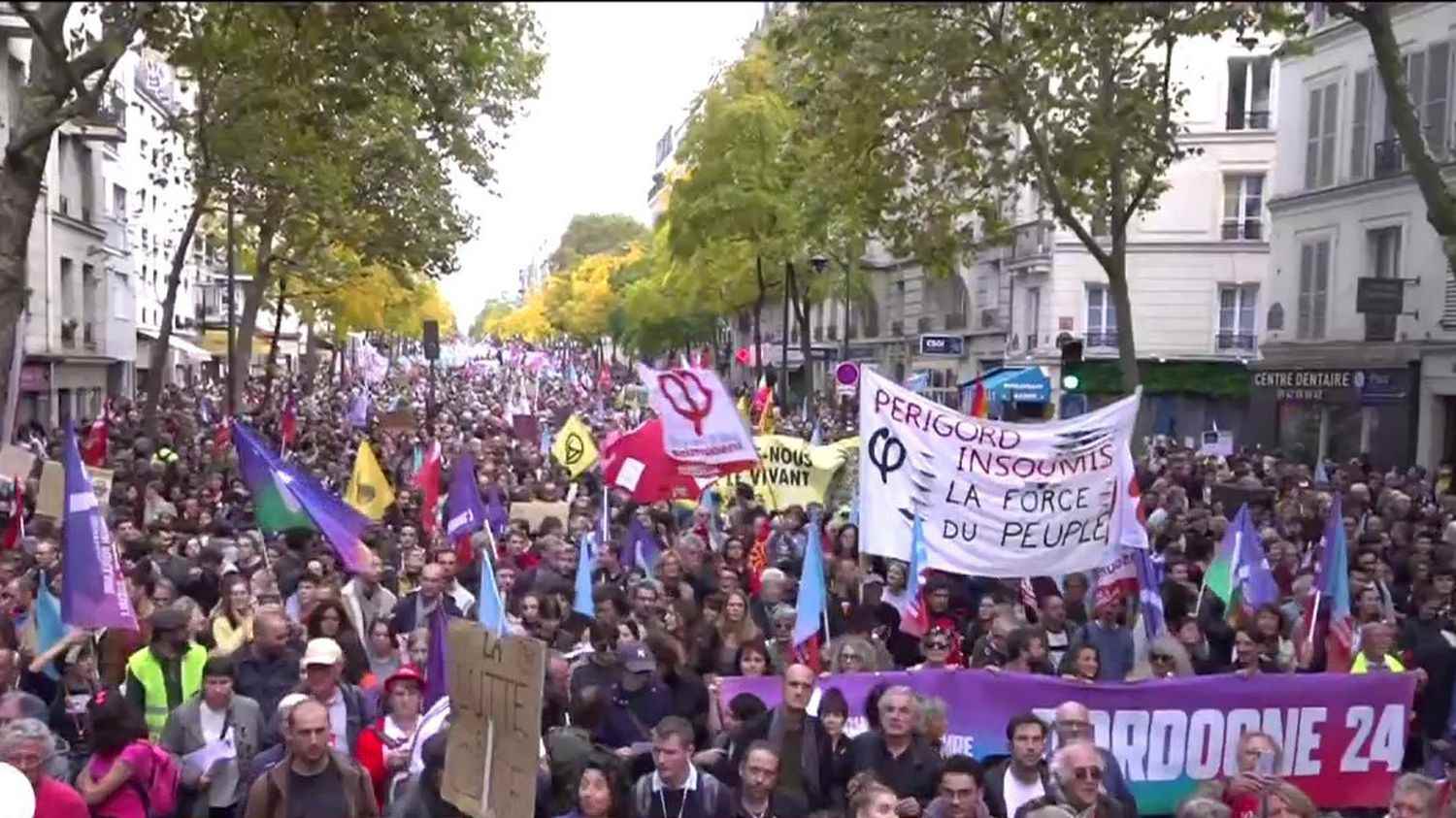The demonstration “The march against the expensive life”, led by Jean-Luc Mélenchon on Sunday October 16 in Paris, brought together 140,000 participants according to the organizers, 30,000 according to a police source, and 29,500 according to the count of the cabinet Occurrence which works for a media collective, including franceinfo.
Auditors say they are perplexed when they hear such discrepancies. We go from 140,000 to 29,500 demonstrators. And some listeners are wondering about the Occurrence firm. They have reservations about its independence. Estelle Cognacq, deputy director of franceinfo and director of Agence Radio France is at the microphone of Emmanuelle Daviet.
Emmanuelle Daviet: Can you remind us of the origin of the use of Occurrence to count the number of people in a demonstration?
Estelle Cognacq: So at each demonstration, there is an often strong discrepancy between the figures given by the demonstrators, the organizers, and those given by the authorities, in particular the prefectures. We know that on both sides there is an interest in inflating or minimizing the figures.
And that’s where the idea of a media group, four years ago, to set up independent counting and therefore to call on the firm Occurrence, which has counting techniques tested, approved especially for counting demonstrators during demonstrations. We were also in a period before Covid where there had been a large number of demonstrations. So this question of counting demonstrators was recurrent.
What other media use Occurrence?
So there are very many media that are associated in this independent count. There are radios like us franceinfo, like the media of Radio France, RTL, but also television channels TF1, BFM, AFP; newspapers : Le Figaro, Le Parisien, Liberation and also regional daily press titles.
So it’s true that today, the counts are made when there is a rather unique demonstration in Paris, rather than during demonstrations in the regions. Hence also the fact that we do not count when there is a national appeal movement with a hundred demonstrations everywhere, but rather a single demonstration.
So there are both public service media and private media. The firm Occurrence offers more reliability than the figures given by the prefecture for example?
So Occurence is a communications research and consulting firm at the start, which set up a counting system based on technology made up of sensors, in this case cameras which are placed on the course of the event, and an algorithm that is developed by a French SME specializing in counting the flow of people, whether in airports, shopping centers or museums for example. When you want to know the number of people who are at a given moment in a place.
So there is some experience of this counting there. To put it simply, Occurrence’s device is a computer system that films the procession from above, which places itself on a crossing point of the procession, which is above and which counts. Each person who crosses a virtual line on the screen is counted. For example, we don’t count the people who go up the demo. It must be in the direction of manifestation, not backwards. And each time, in case a sensor breaks down, we have a backup.
It is a technology, because I know that there have been a lot of remarks and it can be decried, which is reliable, even if of course it includes margins of error. And there, we are trying to bring a touch that is a bit human with counting by hand, let’s say, a human micro-counting, of 30 seconds in real time, on very dense, dense and not very dense moments. This helps straighten out the result a bit. It’s a bit technical. But that’s how the counting works with Occurrence.
